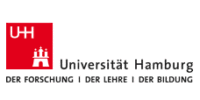I am investigating what strategies fossil fuel-rich countries’ extraction can use to accelerate their decarbonization given the significant incentives to stay on carbon-intensive pathways
Friedrichs et al. (2013) suggest the notion of a “carbon curse” where fossil fuel-rich countries follow more carbon-intensive developmental pathways. They indicate that Norway is a partial exception and suggest four preventative strategies: reduce wasteful extraction practices, invest in energy efficiency/low-carbon technologies, promote a pro-environmental attitude, develop strong domestic institutions, and replace fuel consumption subsidies with taxation.
Van de Graaf et al. (2015) discuss how oil-producing countries could react in response to oil demand peaking in the upcoming decades, due to climate policies and renewable substitutes. The possible strategies they discuss included OPEC quota agreements to keep prices high despite lower demand, improving efficiency, compensating high oil sectors (UN agreements or by attracting feeder industries), and economic diversification, of which Malaysia and Indonesia are successful examples. Ahman (2021) similarly summarizes mentions building on a competitive advantage from renewable energy (if present), fossil fuel subsidy reforms, and economic diversification.
This indicates that although there is potential for detrimental responses, lower carbon pathways could be achieved by applying country-specific market mechanisms discussed by Friedrichs et al. (2013), in combination with the successful global strategies mentioned by Van de Graaf et al. (2015) and Ahman (2021), namely subsidy reforms and economic diversification away from fossil fuels.
Citations:
Åhman, M. (2021, June 9). When gold turns to sand: A review of the challenges for fossil fuel rich states posed by climate policy. https://doi.org/10.13140/RG.2.2.33001.21600
Friedrichs, J., & Inderwildi, O. R. (2013). The carbon curse: Are fuel rich countries doomed to high CO2 intensities? Energy Policy, 62, 1356–1365. https://doi.org/10.1016/j.enpol.2013.07.076
Van de Graaf, T., & Verbruggen, A. (2015a). The oil endgame: Strategies of oil exporters in a carbon-constrained world. Environmental Science & Policy, 54, 456–462. https://doi.org/10.1016/j.envsci.2015.08.004

Indeed, a pertinent topic, with substantive references. Yet, I miss a clear direction at the beginning — what is the question. hypothesis that you are addressing? How does Norway enter the scene? Make sure your audience forms an expectation or becomes at least curious when reading/hearing your intro.
Make sure to provide an internal structure of the poster that follows a storyline — in contrast to the three paragraphs that are right now summarizing a paper each (they do more, but they start like that).
On a smaller formal note: Make sure to use a consistent citation style, in particular for the date (just the year in brackets?).
This is a pertinent topic, and your abstract is already well referenced. I do not understand, however, the argument for the Norwegian case. Is Norway an exception because they already follow these strategies, i.e. are thes strategies the one’s that Norways follows? Or are they suggested by the authors Friedrich et al.?